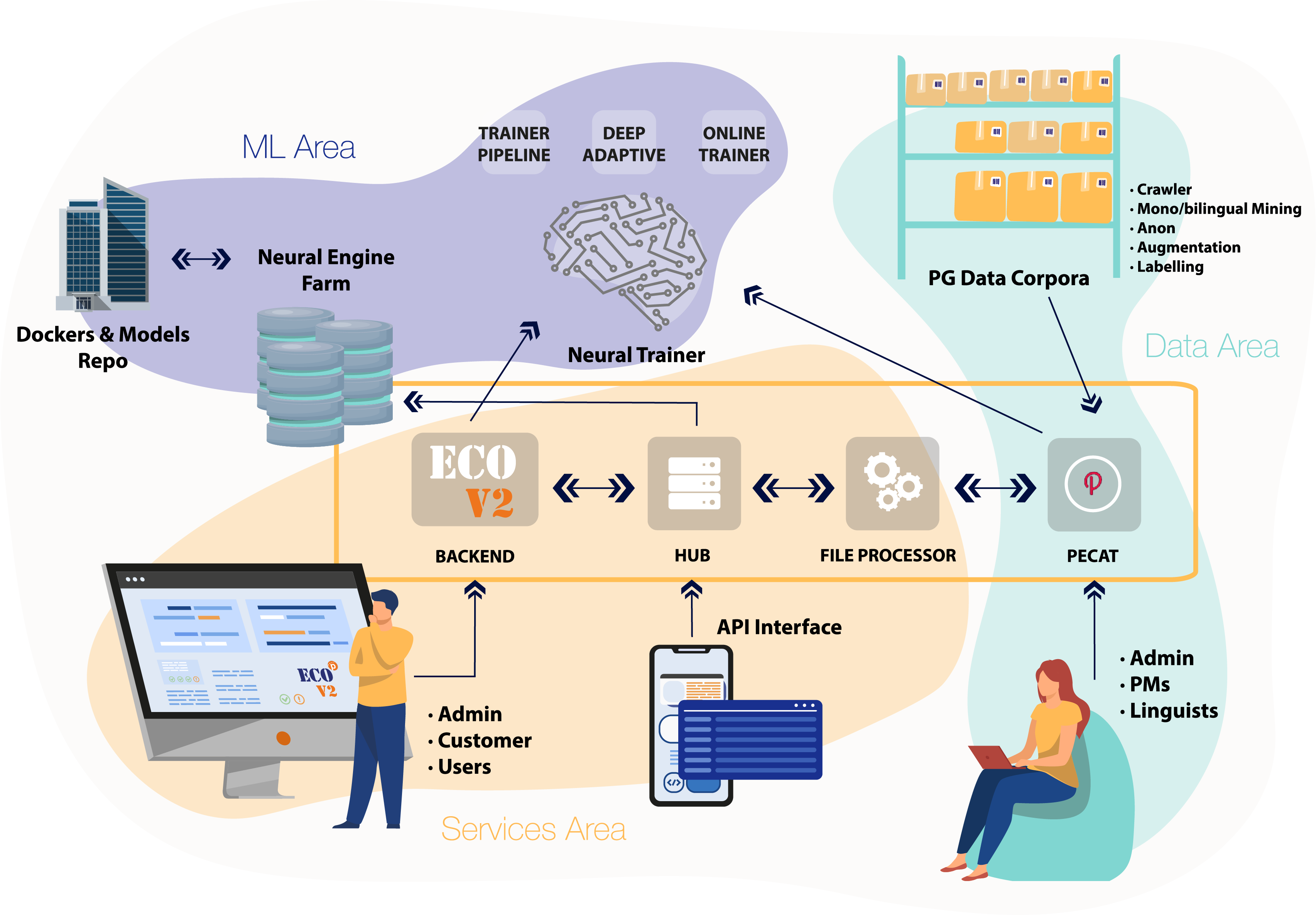Pangeanic Corporate Solution Architecture: Difference between revisions
Created page with "==Pangeanic Architecture Block Diagrams== The diagram shows the different logical blocks. [File:Grafico Arquitectura.png|center] The solution is implemented on a fully distributed architecture with different modules: • Users access the functionalities with a variety of client interfaces (described later) such as the PGB, Web applications, CAT tools or programmatically with a RESTFul API for integrations. • The Production Access Server manages user requests an..." |
|||
| Line 4: | Line 4: | ||
[File:Grafico Arquitectura.png|center] | [[File:Grafico Arquitectura.png|center]] | ||
Revision as of 15:10, 3 December 2021
Pangeanic Architecture Block Diagrams
The diagram shows the different logical blocks.

The solution is implemented on a fully distributed architecture with different modules:
• Users access the functionalities with a variety of client interfaces (described later) such as the PGB, Web applications, CAT tools or programmatically with a RESTFul API for integrations.
• The Production Access Server manages user requests and orchestrates the rest of modules. It requires a standard SQL database to store the required data to fulfil the requests.
• The engines, either local (managed by the organization on their own premises or on their own cloud) or operated by Pangeanic with a SaaS model will perform the actual language processing.
• A file processor is in charge of dealing with converting files and documents when this feature is installed.
• An on-line trainer module is in charge of evolving the models according to the user preferences. This is integrated in the engine package when the on-line learning option is installed.